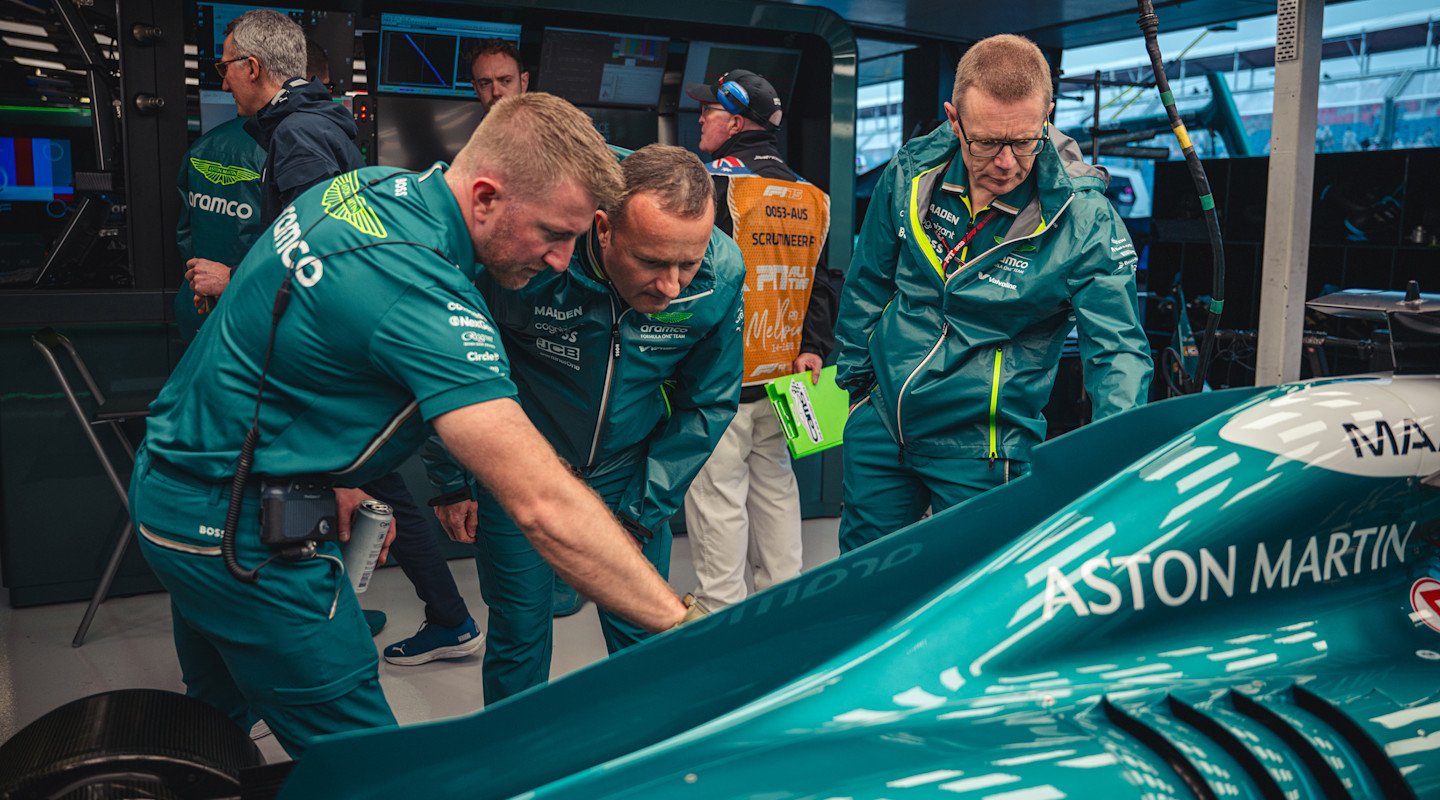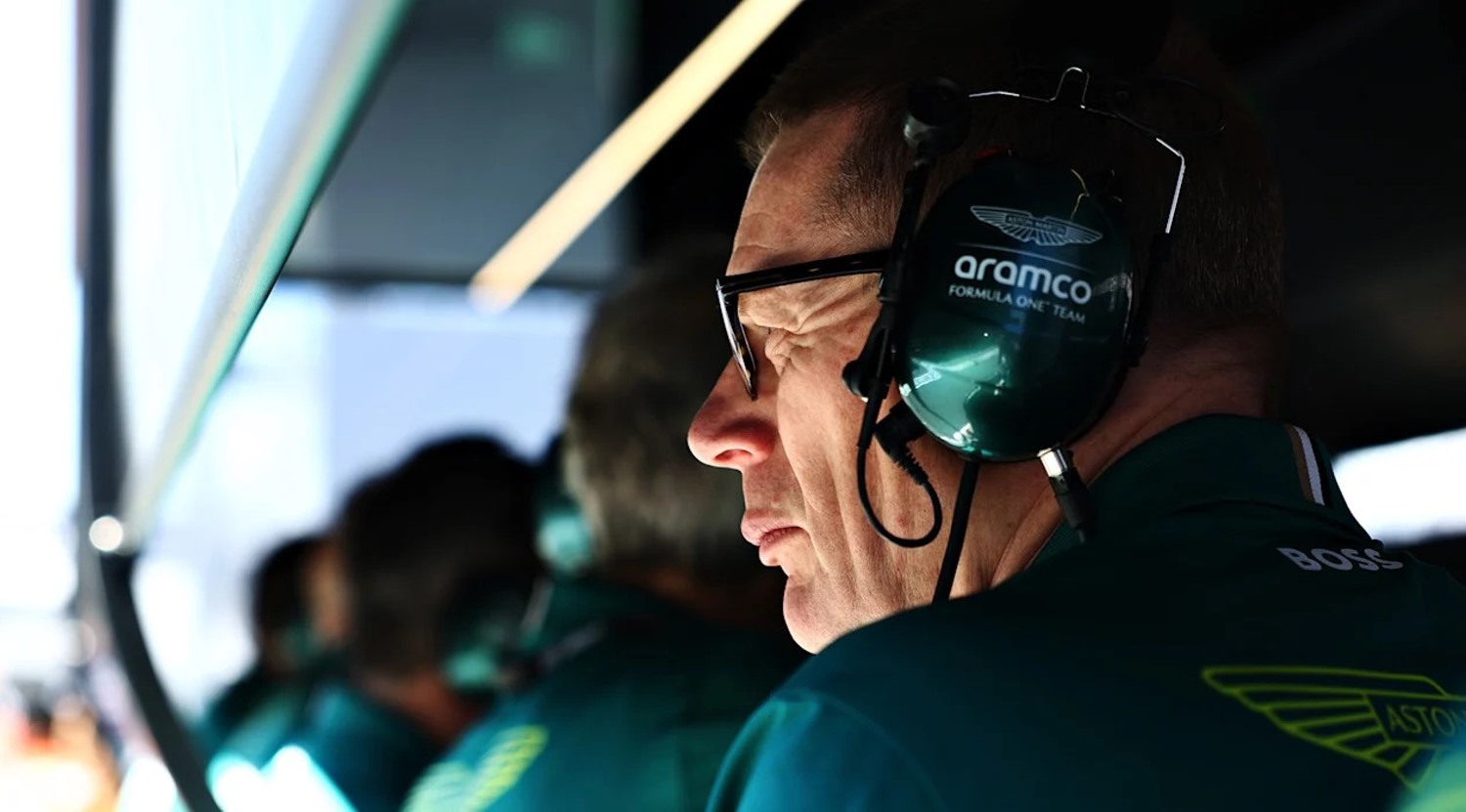F1 News: Andy Cowell on finding the extra 1%, Imola updates
The European leg of the 2025 F1 season dawns: we’re at Imola for the Emilia-Romagna Grand Prix. Aston Martin Aramco CEO and Team Principal Andy Cowell looks ahead to the weekend and reveals what we’re doing in the pursuit of improved performance.
Blink and you’ll miss it. The 24-Grand Prix F1 season is a marathon but the campaign soon flies by, hurtling from weekend to weekend around the world at a relentless speed.
Two months ago, the season hadn’t even started, but, as spring starts to flourish in the northern hemisphere, we’re now on the brink of the second quarter of the season. Long-haul flights and continent hopping give way to the European stint of the year and the ensuing triple-header, starting at Imola.
It’s been a challenging start to the campaign for the team, but not one without plenty of learnings to build on. As we prepare to go racing at one of motorsport’s most storied circuits, CEO and Team Principal Andy Cowell discusses our season so far, updates to the AMR25 in Imola and delving into the details in the pursuit of performance.
We’re a quarter of the way through the 2025 season. What are your reflections on the campaign so far?
“We can’t deny it’s been a tough first quarter: raw car performance has not been at the level that we want it to be. However, we’ve learnt a lot about what’s working and what’s not and that’s not just regarding the car but the whole organization.
“We’ve identified the areas we need to improve. Some of them are really quick wins and some are going to require time, effort, and determination to get us to the point where we can chase reliability and performance and therefore earn championship points regularly.”
If we improve by one per cent we would be in contention for trophies – that’s how fine the margins are — Andy Cowell
There’s an old adage that you learn more when you’re not winning than when you do. Is there some truth to that? Does that apply here?
“I’d say so. If you’re successful, you’re happy, and you don’t spend as much time digging into the fine details as when you’re enduring the pain of not picking points up at race weekends. It’s when you’re not successful that you delve deep into every single detail and put everything on the to-do list for improvement, and that pays off in the medium- and long-term.
“As a team we’re going through a complete transformation. Only a few years ago, the team was significantly smaller; there’s been a huge amount of effort put into growing, in terms of the facilities and the new tools that we’ve got, and the number of people working here.
“We’re now at the stage of establishing how we get 1,000 people to work together in an efficient manner and combining them with the equipment that we’ve got to maximize lap-time gain. It’s about transforming from a team that has struggled with car development into a team that can not only create a racing car but can develop it in a positive way.
“We want to be an effective, efficient, development machine and we need a more detailed, forensic, robust way of operating within the AMR Technology Campus, but without adding bureaucracy.”
What is the team doing to find performance gains?
“Although we’re not regularly picking points up at the moment, if we improve by one per cent we would be in contention for trophies – that’s how fine the margins are, but that’s also far easier said than done. The innovation required to close that small gap requires all of us to be exceptionally inquisitive, digging into the fine detail and looking for anomalies compared with expectation – and they’re not going to be big, glaring anomalies, they’re going to be fine little bits of detail.
“We’ve got to be obsessive. We’ve got to be single-minded, forensic, and detailed with our investigations into the information that’s been gathered from the first six Grands Prix, and when comparing it with the information we’ve gathered from the wind tunnel, CFD, tyre models, driver-in-the-loop simulator, and all the areas where we’re capturing a huge amount of information. We’re digging into that to understand what’s going on, to then come up with ideas that will enable the car to go faster around the racetrack.
“That inquisitive work needs to be turned into substance via CAD models, drawings, composite layups and so on. Every detail needs to be perfect so it delivers what we want, and the stopwatch and the data confirm that that inquisitive approach has delivered improvements in our car.
“It’s a journey which requires absolutely every area of our team to be setting personal bests, which requires incredible amounts of creativity and determination.”

It sounds like the team is far from giving up on 2025. What can we take from our work on the car this year that will benefit our 2026 challenger?
“The engineering methods we’re currently evaluating and reviewing to apply to this year’s car will also lay good foundations for 2026 and beyond. What we put in place now will be beneficial for years to come.
“Improvements to the organization, our methods, and tools, which help the development of AMR25, will provide confidence when it comes to applying them to the ’26 regulations. That in turn will unlock performance on the ’26 car and by extension the ’27 car, the ’28 car and so on. That’s perhaps the most important thing for our team.
“In addition, we’re developing any components that are similar across the ’26 and ’25 cars now so we can take them to circuits this season and do full race distances with them. If we avoid issues, these races will provide the validation testing we need to say these components are ready to go into the ’26 car. There are many components we will go racing with in the second half of the season which could be on next year’s car.”
We’re expecting an improvement in aerodynamic load and an improvement in the consistency of that load on the car — Andy Cowell
The team is bringing updates to Imola. What can you tell us about them?
“We’re bringing a new floor and top bodywork. With the current aerodynamic regulations, the floor is the biggest contributor to downforce and the top bodywork helps with the delivery of good quality airflow to the key areas of the floor, so the two work hand in hand. What we’re expecting from the package is an improvement in aerodynamic load and an improvement in the consistency of that load on the car.
“We will run one car with the new spec and the other car with the existing spec at the start of the event and make a cross-car evaluation. It’s beneficial to run two cars with different specs so we get a direct comparison with identical track conditions.
“I’m interested to see what the driver feedback is and what the engineering feedback is; this will all feed into the correlation between what we see on track, what we’ve measured in our wind tunnel, and what we see in the world of CFD.”
The new wind tunnel at the AMR Technology Campus has been online for a few weeks. What work have we done with this state-of-the-art tool?
“The wind tunnel was used to map the update package we’ve got for Imola. The package has been in the pipeline for several weeks, before the wind tunnel came online, but it’s certainly been useful to have it for the final touches.
“We’ve tested several items in the wind tunnel so far: our launch package, our Imola update package, and our ’26 models, and it’s given us some good insights. And from now on, further updates will be devised and tested fully in the wind tunnel.
“We’ve also been using the first few weeks to familiarise ourselves with the wind tunnel. It’s a highly complex, state-of-the-art facility that’s going to be game-changing for us, so it’s been important to take time to fully understand it so we can unlock all its potential.
“It’s just one of a number of world-class tools we have at our disposal, and now we’ve got the exciting task of extracting all we can from them.”
